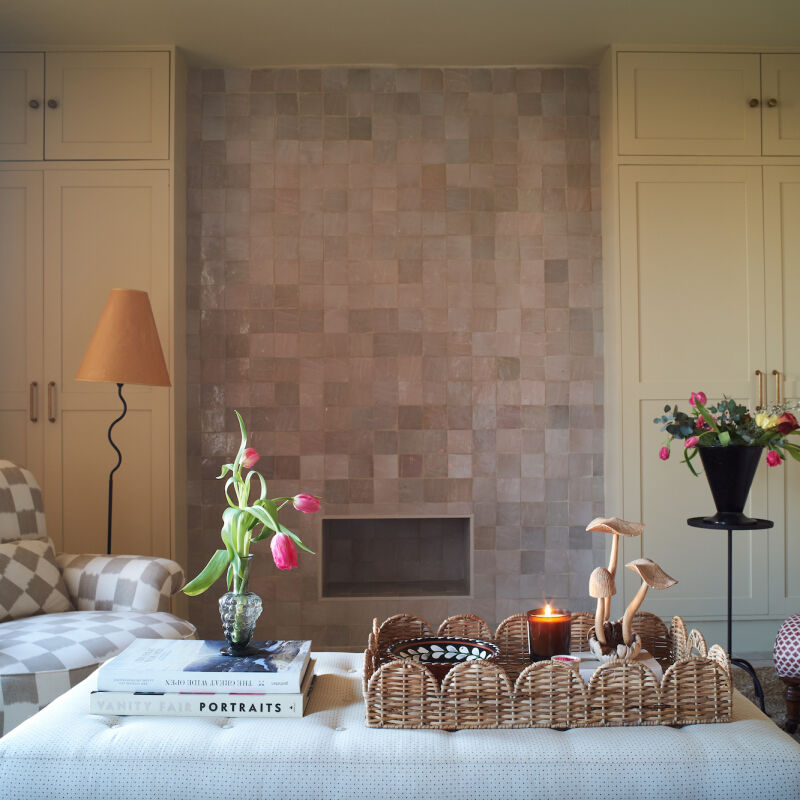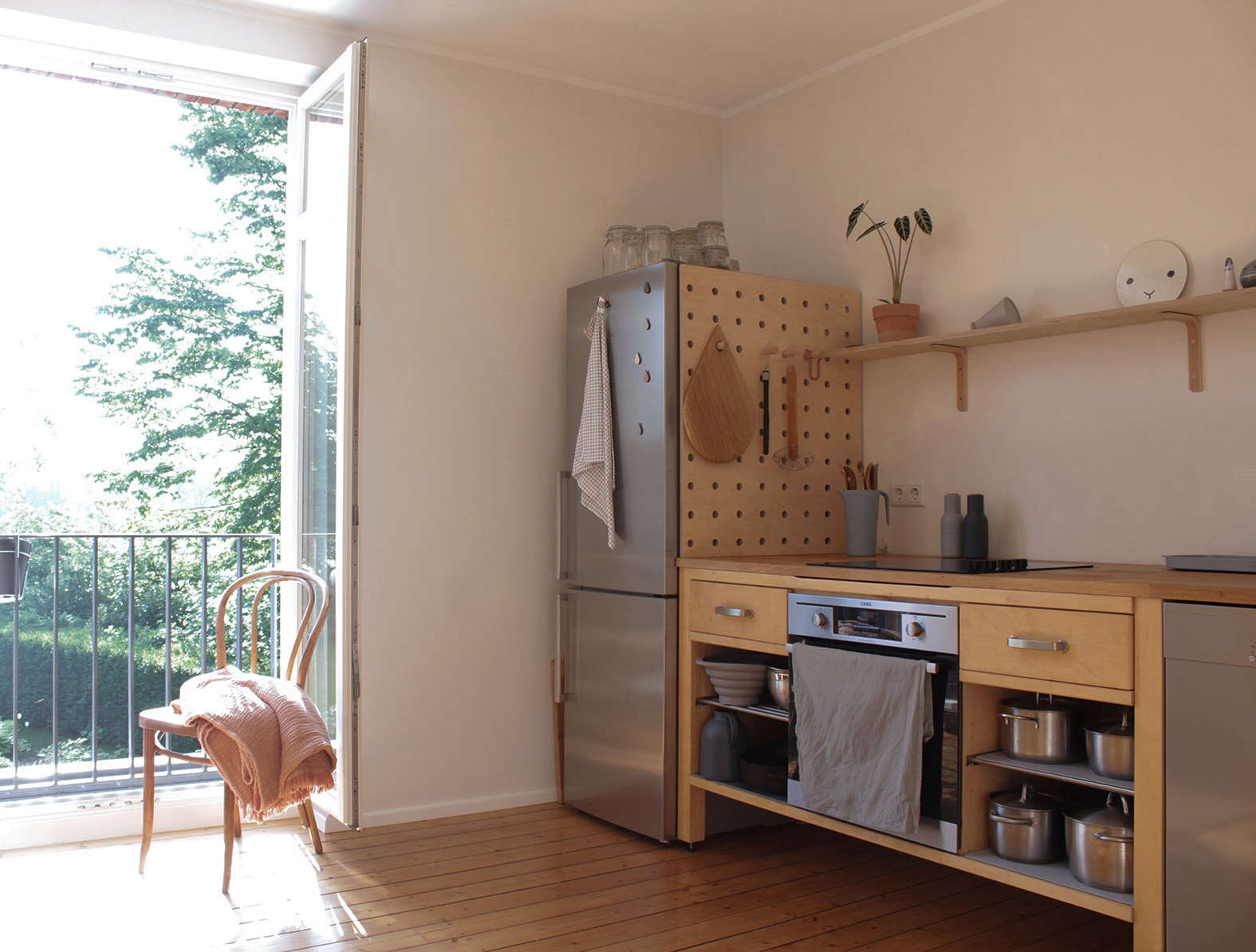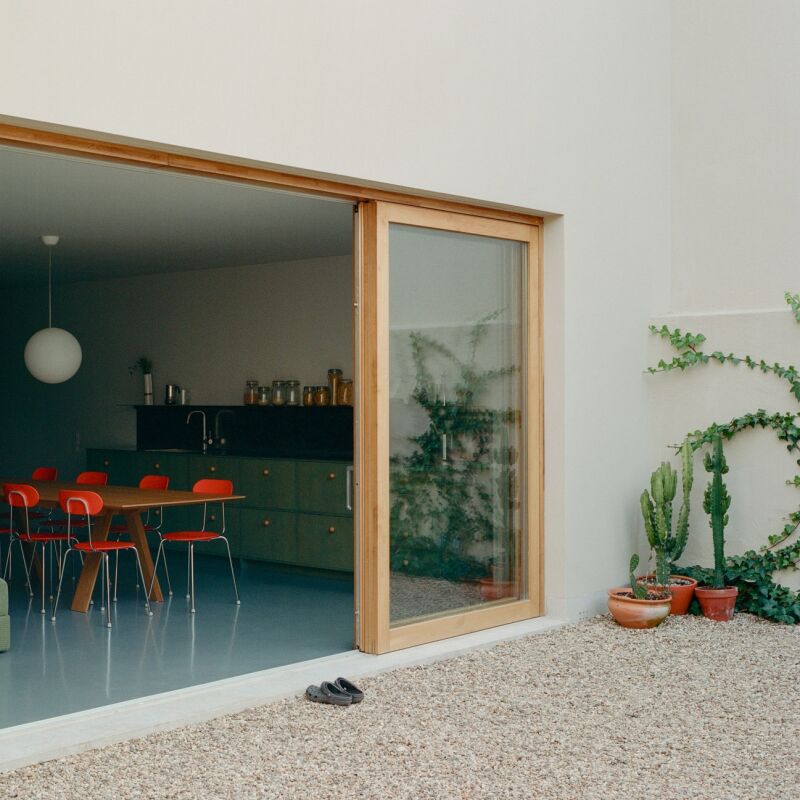Not so long ago, when I was desperate to replace the linoleum floor in our rental house kitchen with a wood one, my designer friends suggested calling local floorer Donald Williams of Donald Williams Floors in Calistoga, CA. While he might be more familiar with my Napa Valley neighbors’ swankier homes, Williams was happy to advise me on what to use in our tiny kitchen. I recently asked him to tell me more about how to approach choosing a wood floor.
Remodelista: What is the first thing to consider when choosing a wood floor?
Donald Williams: Visual appeal and practical utility. If you like the look and texture of wood, and the way it wears and lasts, there are a whole host of considerations to be made.
RM: What sort of things?
DW: Things to consider are color, grain, dimensions, and stability–there are many species of wood; every type of tree has it own qualities.

Above: French oak floors from Exquisite Surfaces by Donald Williams Floors in the home of Napa interior designer Patricia Adrian-Hanson. Photograph by Sean Dagen Photography.
RM: Can you tell us about color?
DW: When selecting a wood floor, color is available two ways: there is color that is intrinsic to the wood–walnut has a brown hue, maple has a whitish cast, oak is yellowish–or you can add a stain; some woods stain well, others don’t.
RM: How do you advise clients on choosing a color?
DW: The problem with picking a color is that folks are reluctant to relinquish control with natural products in which the color is intrinsic to the wood. If you want real wood then you want the visual quality of the wood to be apparent. I’ll show clients a sample of red oak. They’ll pick a stain, then I’ll show them another piece of red oak in the same stain and it will look different. It’s the same type of wood but can look different. It will also look different when it’s done on a larger scale. It makes people uncomfortable, but letting go of control is important; accepting and appreciating the natural variants in wood means being an informed customer.

Above: A Douglas fir floor at Radio Restaurant in Copenhagen. The floor is from Danish company Dinesen treated with white soap and lye. For information on Dinesen, see our post World’s Most Beautiful Wood Floors. Photograph by Anders Hviid.
RM: What about staining with color?
DW: The stain provides the color and the finish goes on top of the stain to protect it and the wood. A natural clear stain is the most common, but we can go wherever a customer takes us. It can be a white or a black or another color. Designers often love to put a thick layer of stain on a wood floor to give it uniformity, but most floors that are uniform in color and going to be compromised in longevity.
RM: Why is that?
DW: The layer of pigment becomes a barrier between the finish on top and the wood below. The finish is what you walk on, and we want the finish to bond with the wood, not just to float on top. The floor may not last long because the color may get walked off.

Above: Samples of oak with different colored finishes at Heritage Salvage in Petaluma.
RM: When using a polyurethane finish, how many layers do you recommend?
DW: This depends on usage and budget: is it a house for a couple or is the space used for daycare ? The more layers, the more protection. We do anywhere up to four coats of finish.
RM: What colors are popular for stains?
DW: In the last two years we’ve been doing a lot more grayish brown because of Restoration Hardware and its weathered woods.
RM: What is there to consider when it comes to grain?
DW: That’s a matter of personal preference. Some woods have a calm, uniform grain, others have a lot of action and variety. Hickory is very unpredictable and changes a lot, oak has an active grain, maple grain is less apparent as is cherry, and walnut has a calmer grain. If folks want the floor to be a focal point, they need a more active grain. If they want the furniture or fireplace to be the focal point, they may go for a calmer grain.
RM: What are the most popular woods?
DW: Over half of the wood flooring used in the US is oak, maybe even two thirds.

Above: Oversized rustic oak planks from Cheville Parquet.
RM: You mentioned width of wood.
DW: We’ve laid flooring as wide as 12 inches, which is wide. The wider it is, the more expensive. Wider woods are hickory, pine, and fir. If you’re going wide on a budget, pine is the least expensive, but it’s soft and will dent more than other woods. The next best priced option is oak.
RM: Requirements for laying down a wood floor?
DW: You should have a subfloor that is flat, clean, and dry. We measure this with a moisture meter and make sure the moisture content is the same as the new flooring. Wood expands and contracts as humidity and temperature vary. If you need a stable floor, then you may want to consider an engineered floor.
RM: Why is that?
DW: Manufactured products are easy to work with generally because they’re more stable than wood. In terms of engineered wood, you want a thick wear layer so you can sand in the future. It can be 1/16th of an inch of wood on top of a plywood base; typically, the more layers of plywood the more stable and high quality the product. Engineered floors are a cheap alternative to wood; Reward is a good middle-of-the-road engineered floor.
RM: Trends?
DW: We now use fir for flooring because it has a rustic quality. Once upon a time we would call it defective wood because it has open knots or large mineral streaks. It used to be culled; now much of it is used for flooring–people like the worn look and that it harkens back to things hand-made.
RM: So a rustic look is popular?
DW: Yes, we’ll hand scrape the boards if needed. There is a fiction here. Everyone knows that the wood is not that old, but distressing and gouging gives it a worn look with a sense of permanence. We use reclaimed wood, too, but it’s typically more expensive.

Above: Joseph Dirand’s new apartment in Paris features chevron floors; photo by Simon Watson for the NY Times.
RM: Thoughts on the return to favor of herringbone and chevron floors?
DW: They’re like a tweed jacket–they never go out of style.
Looking for more wood flooring resources and inspiration? See our previous posts: Reclaimed Wood Floors Made Modern, Flooring from Heritage Salvage, Metal Patches on Old Wood Floors, and a feature on the Ultimate Arborist. If you are looking for the ultimate pale wood floors, check out Izabella’s post on How to Create a Scandi Whitewashed Wood Floor.




Have a Question or Comment About This Post?
Join the conversation (7)